I'll use a shielded CAT5 cable for RS-485 line. The simplified bus structure is drawn in the picture.
LDO is AP2204RA-5.0TRG1 with a 22uF electrolytic and a 1uF ceramic capacitor at the input. RS-485 IC is ADM2483BRWZ.
I have 130 slaves and their isolated part of RS485 IC is supplied from the supply placed at master. The cable length between slaves are about 0.5 meter. I tried it for 4 slaves and I'll increase it up to 130 slaves in the end. Is there any problem in this structure?

